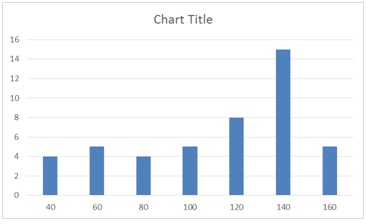- Business Concepts ›
- Statistics ›
- Negative Skewness
Negative Skewness
Definition & Meaning
This article covers meaning & overview of Negative Skewness from statistical perspective.
What is meant by Negative Skewness?
Often the data of a given data set is not uniformly distributed around the data average in a normal distribution curve. A negatively skewed data set has its tail extended towards the left. It is an indication that both the mean and the median are less than the mode of the data set. In short it is the measure of the degree of asymmetry of data round its mean.
A negatively skewed data doesn’t have a bell curve. More data is concentrated to the right side of the axis. Using the Skew () function in excel one can easily calculate the Skewness of the data set. Too much of Skewness can mislead the data by changing the median by inflating or deflating it.
For Example:
In a society on considering the average income of the people it may so happen that the average may not be a true reflection of the true scenario. Very high income of a few is most likely to hide the low income of the majority by inflating the average income.

This article has been researched & authored by the Business Concepts Team which comprises of MBA students, management professionals, and industry experts. It has been reviewed & published by the MBA Skool Team. The content on MBA Skool has been created for educational & academic purpose only.
Browse the definition and meaning of more similar terms. The Management Dictionary covers over 1800 business concepts from 5 categories.
Continue Reading:
What is MBA Skool?About Us
MBA Skool is a Knowledge Resource for Management Students, Aspirants & Professionals.
Business Courses
Quizzes & Skills
Quizzes test your expertise in business and Skill tests evaluate your management traits
Related Content
All Business Sections
Write for Us